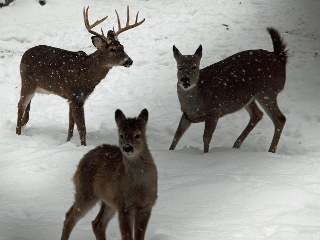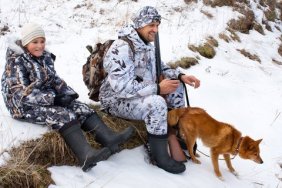 As discussed in part 1 of our useful hunting tips, old information can sometimes become new again. It is our nature as hunters to grow and learn, but being reminded of the basics can offer a fresh perspective on how we do things. Here are five more tips that may help you be a better hunter.
As discussed in part 1 of our useful hunting tips, old information can sometimes become new again. It is our nature as hunters to grow and learn, but being reminded of the basics can offer a fresh perspective on how we do things. Here are five more tips that may help you be a better hunter.
Triangulate important landmarks
Whenever I see an animal die or I spot a giant shed antler from hundreds of yards away, I try to mark its location. For most hunters, this means noticing a recognizable landmark nearby and remembering it. However, why use one landmark when you can use two or three from different angles? I try to place the animal or antler in the middle of a triangle and find landmarks that mark the corners of that triangle. It works.
Use decoys
Most think of decoys as physical likenesses of a targeted animal but you can use your voice and your foot steps as decoys too. Mimicking other animals can help cover your approach so why not do it with your voice or by imitating other animal’s footfalls? For example, acting like a squirrel works great in most timber, and imitating cattle can ensure that you are ignored by ducks and deer that live anywhere near cattle.
Still-hunt the worst weather
When it is raining, snowing or blowing, it is easy to want to stay home because animal movement will be nonexistent. Forget that. Since you know animals won’t be moving, use that information to sneak into an animal’s safety area for a rare opportunity of killing a bedded animal. They won’t be expecting you so use the wind and happy hunting.
Find the nasty cover
If you are deer hunting in any area where you might have to compete with other hunters, find the thickest, nastiest cover and hunt it. Most of the time, these nasty places are thicker than a wicker basket but are in the core hunting area. Chances are good that you might have this spot to yourself and chances are also good that an escaping deer will head your way when the other hunters spook them.
Trolling for turkeys
The inventor of the modern deer call and the man who designed dozens of game calls that put Lohman Game Calls on the map, Brad Harris, told me that he likes to troll for turkeys when the season is winding down. He explained that he covers a lot of ground and stops every hundred yards to make a few calls with his box call. The shrill sound of most box calls will force any half-interested gobbler to sound off and give away not only his location, but also his remaining urge to breed. Once you get a response, settle in for a calling session and don’t expect any more answers. Most toms at the end of the season come in silent, so be ready for them.








